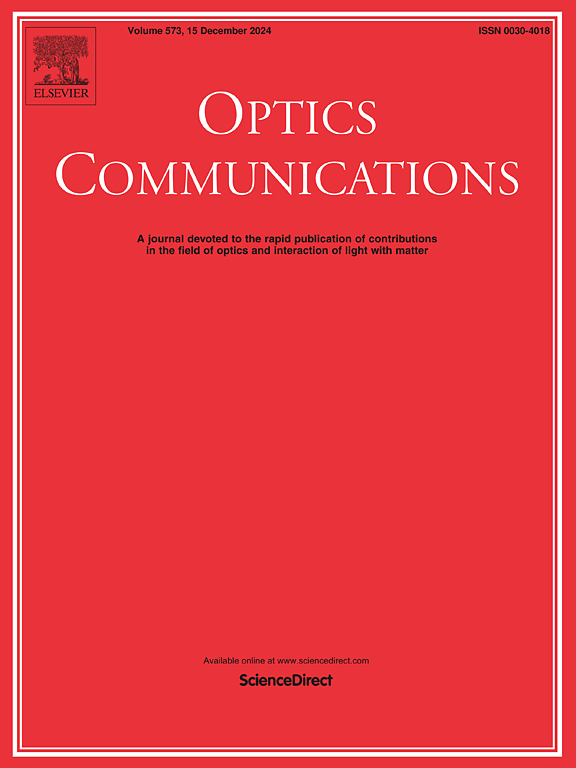混合模式锁定光纤激光器中的 L 波段波长可切换束缚态
IF 2.5
3区 物理与天体物理
Q2 OPTICS
引用次数: 0
摘要
本文介绍了一种基于非线性偏振旋转(NPR)和纳米材料可饱和吸收体的混合锁模光纤激光器。由于 NPR 滤波器的存在,我们获得了 L 波段波长可切换的常规孤子(CS)和束缚态(BS)。实验还观测到了紧密 BS 和松散 BS 以及 "2 + 1 "型 BS。我们通过数值模拟研究了 CS 和 BS 的形成,其结果与实验结果一致。我们的工作加深了对混合模式锁定光纤激光器中 BS 形成的理解,并为 L 波段光源提供了新的解决方案。本文章由计算机程序翻译,如有差异,请以英文原文为准。
L-band wavelength-switchable bound states in a hybrid mode-locked fiber laser
This paper presents a hybrid mode-locked fiber laser based on the nonlinear polarization rotation (NPR) and the nanomaterial saturable absorber. Due to the presence of the NPR filter, we obtain L-band wavelength-switchable conventional solitons (CSs) and bound states (BSs). The tightly BSs and loosely BS, as well as the "2 + 1" type BS, are also experimentally observed. We study the formation of CSs and BSs by numerical simulations, the results of which are consistent with the experimental results. Our work deepens the understanding of the formation of BSs in hybrid mode-locked fiber lasers and provides new solutions for L-band light sources.
求助全文
通过发布文献求助,成功后即可免费获取论文全文。
去求助
来源期刊

Optics Communications
物理-光学
CiteScore
5.10
自引率
8.30%
发文量
681
审稿时长
38 days
期刊介绍:
Optics Communications invites original and timely contributions containing new results in various fields of optics and photonics. The journal considers theoretical and experimental research in areas ranging from the fundamental properties of light to technological applications. Topics covered include classical and quantum optics, optical physics and light-matter interactions, lasers, imaging, guided-wave optics and optical information processing. Manuscripts should offer clear evidence of novelty and significance. Papers concentrating on mathematical and computational issues, with limited connection to optics, are not suitable for publication in the Journal. Similarly, small technical advances, or papers concerned only with engineering applications or issues of materials science fall outside the journal scope.
 求助内容:
求助内容: 应助结果提醒方式:
应助结果提醒方式:


